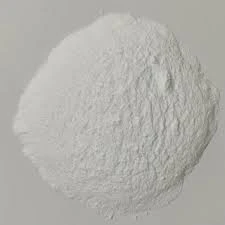The Role of Polyacrylamide in Various Applications
Polyacrylamide (PAM) is a synthetic polymer widely used in a variety of fields due to its unique properties. Composed of acrylamide monomers, this polymer can be customized to meet specific requirements, making it versatile for various applications, from industrial to environmental uses.
The Role of Polyacrylamide in Various Applications
In addition to water treatment, polyacrylamide is also extensively used in agriculture and horticulture. As a soil conditioner, PAM improves soil structure and increases water retention, which is crucial in arid regions. By helping to reduce erosion and maintain soil moisture, polyacrylamide supports crop growth and agricultural productivity. Furthermore, the use of PAM in irrigation systems helps optimize water usage, thereby promoting efficient water management in farming practices.
polyacrylamide polymer

Another significant application of polyacrylamide lies within the oil and gas industry. It is used as a viscosifier in hydraulic fracturing, where its ability to increase fluid viscosity enhances the efficiency of the extraction process. This results in improved recovery of oil and gas from reservoirs, making polyacrylamide an essential component in modern energy production. Additionally, polyacrylamide can be utilized in enhanced oil recovery (EOR) techniques, optimizing the extraction of remaining oil after primary recovery methods have been exhausted.
Moreover, polyacrylamide has applications in the field of biomedicine and biotechnology. It is widely used in gel electrophoresis for the separation of biomolecules like DNA, RNA, and proteins. Its ability to form hydrogels allows for controlled drug release, making PAM a candidate for drug delivery systems. The biocompatibility of certain forms of polyacrylamide also holds potential for tissue engineering and regenerative medicine applications.
Despite its many beneficial uses, it is essential to handle polyacrylamide with care, as acrylamide is a known neurotoxin and a potential carcinogen. Manufacturers and users must adhere to safety regulations and guidelines to mitigate any risks associated with its use.
In conclusion, polyacrylamide is a multifaceted polymer with applications ranging from water treatment and agriculture to the oil industry and biomedicine. Its ability to be tailored for specific functions has made it an invaluable resource across various sectors, enhancing efficiency and contributing to advancements in technology and environmental sustainability. Continued research will likely explore additional uses, ensuring the ongoing relevance of polyacrylamide in the modern world.

